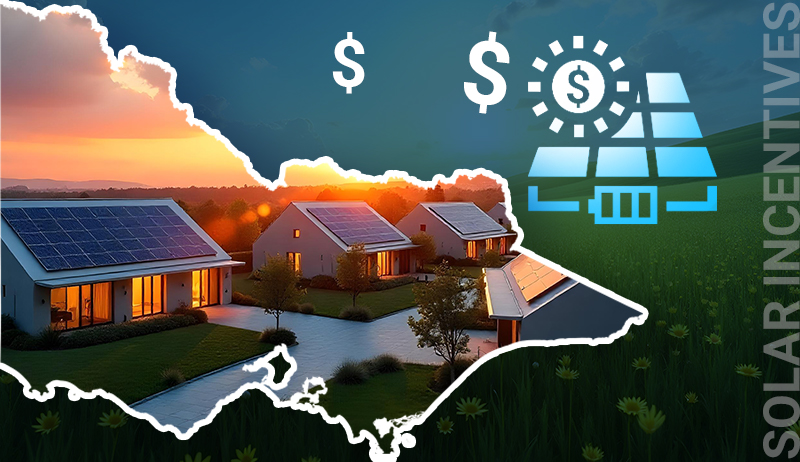Stockholm: Sustainable Urban Living
Stockholm, the capital city of Sweden, has gained worldwide recognition for its commitment to sustainable urban development.
One of its standout initiatives is the creation of eco-districts, which serve as models for sustainable living and showcase innovative solutions for energy efficiency, waste management, and green infrastructure. This article explores Stockholm’s pioneering efforts in developing eco-districts and highlights how they are shaping the city’s path towards a greener and more livable future.
Fact and Data
Stockholm’s dedication to eco-districts is reflected in impressive facts and data. The city has successfully developed several eco-districts, including the renowned Hammarby Sjöstad. This sustainable neighborhood features energy-efficient buildings, green spaces, and eco-friendly infrastructure.
As a result of these initiatives, Hammarby Sjöstad has achieved a significant reduction in energy consumption, with buildings using up to 50% less energy compared to conventional structures. Additionally, the district’s waste management system has achieved a recycling rate of over 95%, demonstrating Stockholm’s commitment to a circular economy and sustainable resource utilization.
Stockholm, Sweden: Pioneering Eco-Districts for Sustainable Urban Living
Stockholm, often lauded as one of the world’s most sustainable cities, has taken significant strides in creating eco-districts that exemplify environmentally conscious urban planning. These eco-districts incorporate innovative strategies and technologies to achieve energy efficiency, promote waste reduction, enhance biodiversity, and create a high quality of life for residents.
One of Stockholm’s notable eco-districts is Hammarby Sjöstad, situated along the shores of Lake Hammarby. This former industrial area has been transformed into a thriving sustainable neighborhood. The district showcases a holistic approach to sustainable urban living, integrating energy-efficient buildings, green spaces, and sustainable transportation options.
Energy efficiency lies at the core of Stockholm’s eco-districts. In Hammarby Sjöstad, buildings are designed with energy-saving features such as superior insulation, efficient ventilation systems, and advanced energy management systems. These measures have resulted in significant reductions in energy consumption, with buildings in the district using up to 50% less energy compared to conventional structures. Stockholm’s commitment to renewable energy is also evident, with the integration of solar panels and other renewable energy sources in buildings throughout the eco-districts.
Waste management plays a crucial role in Stockholm’s eco-districts, aiming to achieve a circular economy and minimize waste generation. Hammarby Sjöstad, for example, implements an innovative waste management system that prioritizes recycling and resource recovery. Residents have access to multiple waste streams, including separate bins for organic waste, recyclables, and residual waste. The district’s waste management system has achieved an impressive recycling rate of over 95%, significantly reducing the amount of waste sent to landfills and promoting the reuse of valuable resources.
Green spaces and biodiversity are integral components of Stockholm’s eco-districts, ensuring a harmonious coexistence between urban development and nature. The eco-districts incorporate green roofs, urban gardens, and parks that not only enhance the aesthetic appeal but also provide ecosystem services, improve air quality, and support biodiversity. These green spaces serve as valuable recreational areas for residents and contribute to the overall well-being and mental health of the community.
Moreover, Stockholm’s eco-districts prioritize sustainable transportation options to reduce car dependency and promote active mobility. The districts are well-connected with public transportation networks, cycling lanes, and pedestrian-friendly pathways. This multimodal approach encourages residents to choose sustainable modes of transportation, reducing carbon emissions, traffic congestion, and promoting a healthier and more active lifestyle.
Conclusion Stockholm, Sweden: Pioneering for Sustainable Urban
Stockholm, Sweden, stands at theforefront of sustainable urban development with its pioneering eco-districts.
These innovative neighborhoods, such as Hammarby Sjöstad, showcase Stockholm’s commitment to energy efficiency, waste reduction, green infrastructure, and sustainable transportation. The impressive facts and data surrounding these eco-districts highlight the tangible outcomes of Stockholm’s sustainable initiatives.
By prioritizing energy efficiency in building design and implementing advanced energy management systems, Stockholm’s eco-districts significantly reduce energy consumption, contributing to the city’s ambitious climate targets. The integration of renewable energy sources further enhances the districts’ sustainability and reduces reliance on fossil fuels.
Stockholm’s waste management system exemplifies a circular economy approach, with eco-districts achieving remarkably high recycling rates. Through efficient waste separation and resource recovery, valuable materials are recycled, minimizing waste sent to landfills and promoting sustainable resource utilization.
The incorporation of green spaces, urban gardens, and parks within eco-districts not only enhances the city’s aesthetic appeal but also supports biodiversity and provides residents with access to nature. These green areas improve air quality, mitigate urban heat islands, and provide recreational spaces for community members to enjoy, promoting a sense of well-being and connectivity with the natural environment.
Additionally, Stockholm’s commitment to sustainable transportation is evident in its eco-districts. By prioritizing public transportation, cycling infrastructure, and pedestrian-friendly pathways, the city encourages residents to choose sustainable modes of transportation, reducing the reliance on private cars. This approach contributes to improved air quality, reduced traffic congestion, and healthier lifestyles.
Stockholm’s eco-districts serve as models for sustainable urban living, inspiring cities around the world to adopt similar strategies. The city’s success in developing these districts is a testament to its visionary leadership, community engagement, and long-term commitment to sustainable development.
As Stockholm continues to evolve and expand its eco-districts, it sets an example for cities globally, demonstrating that a sustainable future is within reach. By prioritizing energy efficiency, waste reduction, green infrastructure, and sustainable transportation, Stockholm showcases how urban areas can thrive while minimizing their environmental impact.
In a world grappling with the challenges of climate change and urbanization, Stockholm’s eco-districts offer a beacon of hope, proving that sustainable development is not only achievable but also necessary for a resilient and prosperous future. Through continued innovation, collaboration, and the replication of Stockholm’s successful models, cities worldwide can pave the way towards a more sustainable and livable world for generations to come.
https://www.exaputra.com/2023/06/stockholm-sweden-pioneering-for.html
Renewable Energy
Off-Grid Solar Power Simplified – Off-Grid 101
Renewable Energy
Offshore Turbine Toilets, BlackRock’s $38B Acquisition
Weather Guard Lightning Tech

Offshore Turbine Toilets, BlackRock’s $38B Acquisition
OEG celebrates 500 offshore turbine toilet installations while BlackRock acquires AES for $38 billion, signaling continued investment despite global wind auction slowdowns and European wind droughts.
Sign up now for Uptime Tech News, our weekly email update on all things wind technology. This episode is sponsored by Weather Guard Lightning Tech. Learn more about Weather Guard’s StrikeTape Wind Turbine LPS retrofit. Follow the show on Facebook, YouTube, Twitter, Linkedin and visit Weather Guard on the web. And subscribe to Rosemary Barnes’ YouTube channel here. Have a question we can answer on the show? Email us!
Welcome to Uptime News. Flash Industry News Lightning fast. Your host, Allen Hall, shares the renewable industry news you may have missed.
Allen Hall 2025: There’s good news today from the wind energy sector, and it starts of all places with toilets. OEG and Aberdeen Headquartered company just reached a milestone. They’ve installed their 500th in turbine welfare unit across the UK’s offshore wind sector. If you’ve ever worked on an offshore wind turbine, you know why this matters.
These aren’t just convenience facilities. Their dignity and their safety. The other difference between a dangerous transfer to a standby vessel and staying on the job. The units operate in the harshest offshore conditions with no external power or water. Nine offshore wind farms now have these facilities and they’re making offshore work accessible for [00:01:00] women helping retain a more diverse workforce.
And while OEG celebrates 500 installations, something much larger is happening in the American Midwest. Gulf Pacific Power. Just completed a major transaction with NL Green Power North America. Gulf Pacific acquired all of E L’s interest in five operating wind facilities, totaling over 800 megawatts of capacity.
The portfolio includes Prairie Rose in Minnesota, Goodwill and Origin, and Rocky Ridge in Oklahoma, and a facility in North Dakota. Projects with long-term power purchase agreements and high credit counterparties. And then there’s BlackRock. The world’s largest asset manager is placing a $38 billion bet on American clean energy.
They’re close to acquiring power Giant a ES, which have give BlackRock ownership of nearly eight gigawatts of wind power capacity. A [00:02:00] ES leads in sign deals with data center customers with artificial intelligence driving unprecedented electricity demand. That positioning matters.
The weather numbers tell their own story about wind’s challenging year. Most of Europe recorded wind speeds four to 8% below normal in the first half of this year. The wind drought curtailed generation in Germany, Spain, France, and the United Kingdom. But the Northeastern United States saw winds seven to 10% above average in parts of Norway, Sweden, and Northern China also benefited.
And in storm, Amy, which is passing through the uk, it drove wholesale electricity prices negative for 17 hours. 20 gigawatts of wind power flooded the grid and the grid paid users to consume electricity. Too much wind, not enough demand. The offshore wind industry faces real headwinds. Global awards fell more than 70% in the first nine months of this year.
Of about 20 gigawatts of expected auctions, [00:03:00] only 2.2 gigawatts have been awarded. Germany, the Netherlands and Denmark are preparing new frameworks to restore investor confidence and Japan designated two promising offshore zones, but confidence there is still shaken when Mitsubishi pulled out of its first auction due to some sorry costs.
So here’s what we have. An Aberdeen company celebrating 500 toilet installations that transform working conditions. A Midwestern power company expanding its wind portfolio by 800 megawatts and the world’s largest asset manager, betting $38 billion on American energy infrastructure.
All while offshore auctions stall globally, all while Europe experiences a wind drought and the UK experiences at times too much wind. The sector faces challenges US federal opposition, variable weather, and market slowdowns, but the fundamentals haven’t changed. Data centers. Need power and [00:04:00]someone has to generate those megawatts and companies are still buying wind farms.
Asset managers, are still making billion dollar bets, and engineers are still improving infrastructure. One toilet at a time. When a company celebrates its 500th toilet installation, it’s about commitment to an industry they believe has a future. When investors acquire 800 megawatts of operating capacity, they’re betting on tomorrow.
And when the world’s largest asset manager places a $38 billion bet. They’re looking past the turbulence to see the demand. 500 reasons to believe each one installed in a turbine tower. Each one making life better for workers in harsh conditions.
Each. One. A sign that this industry isn’t going anywhere.
https://weatherguardwind.com/offshore-toilets-blackrock/
Renewable Energy
New Jersey’s Electricity Rate Crisis Is A Perfect Storm for Wind Energy
Weather Guard Lightning Tech

New Jersey’s Electricity Rate Crisis Is A Perfect Storm for Wind Energy
New Jersey ratepayers received an unwelcome surprise in June 2024 when electricity rates jumped between 17 and 20 percent virtually overnight. But behind the dramatic increase is a much larger story about the challenges facing renewable energy deployment, grid modernization, and the future of power generation across the PJM Interconnection region—one that has significant implications for the wind energy industry.
According to Kyle Mason, Associate Planner at the Regional Plan Association, the rate spike stems from record high prices in PJM’s annual capacity auction, which secures power for peak grid loads. PJM operates the grid for New Jersey and 12 other states, covering over 60 million people. The capacity market’s unprecedented pricing “trickled down to increased electricity rates for New Jersey rate payers,” Mason explained.
Old Grid, New Demands
“We have a very old grid, and we’re trying to update it in real time,” said RPA’s Robert Freudenberg – while bringing more energy onto the system. “It’s like trying to build the plane while you’re flying it.”
Freudenberg, Vice President of the Energy & Environment Program at RPA, described the crisis as a convergence of multiple factors: the grid’s age presents challenges, the interconnection process has slowed dramatically, and demand is skyrocketing.
The interconnection queue process, which once took a few years, now stretches across many years. According to Mason, as of April of last year, over 200 gigawatts of projects sat waiting for study in the interconnection queue, with approximately 98 percent comprising solar, wind (both onshore and offshore), and storage. Even if only half of those projects eventually come online, Mason noted, “it would markedly improve the rate situation.”
Unprecedented Demand Growth
The energy demand situation is compounded by explosive load growth, driven largely by artificial intelligence and data centers. Mason noted that current projections show load growth reaching five percent annually—levels, he said, “we have not seen…since air conditionings were invented.”
These aren’t small facilities. “The industry is seeing massive, massive expansion of data centers,” Mason said. “Not just small data centers that we saw expand during the years leading up to the dot-com bubble, but rather these massive hundred-plus megawatt data centers,” primarily concentrated in Northern Virginia, New Jersey, Pennsylvania, and Ohio.
By 2030, data centers alone could account for 10 to 12 percent of electricity demand on the PJM grid—a staggering figure that underscores the urgency of bringing new generation capacity online quickly.
Offshore Wind “Ideal Solution” for Energy Island
New Jersey, the most densely populated state in the country, uses more energy than it produces. Thanks to that distinction and its geographic constraints, it’s referred to as an “energy island”- where wind represents an ideal solution for large scale generation.
The state had plans for approximately five gigawatts of offshore wind capacity, including the 1,100-megawatt Ocean Wind project, which has since been abandoned. Federal policy shifts have further complicated the landscape, effectively putting offshore wind development on ice across the region.
Freudenberg pointed to the South Fork Wind farm off Long Island as proof of concept.
“If you look at the data from that, [South Fork] is performing very well. It’s reliable,” he said, noting it put a thousand people to work and stabilized rates for customers.
Grid Reliability Challenges
Adding another layer of complexity, PJM recently implemented stricter reliability rules that dramatically reduced the amount of generation qualifying as reliable.
“The buffer dropped from about 16 gigawatts of supposedly reliable energy sources to about 500 megawatts when the reliability requirements were issued,” Weather Guard Lightning Tech CEO and Uptime Podcast host Allen Hall notes in the interview.
“Many fossil fuel plants face reliability concerns during extreme weather events, extreme cold events,” Mason explained. That made the older plants ineligible to enter PJM’s capacity market under the new rules. That caveat simultaneously removes baseload capacity while renewable projects remain stuck in the interconnection queue.
Is PJM’s Progress Too Little, Too Late?
PJM has made some progress addressing interconnection challenges. Working with the Federal Energy Regulatory Commission, the grid operator implemented a new cluster study process that prioritizes projects on a “first ready to serve basis” rather than first-come, first-serve. Mason reported they’ve already studied over 40 gigawatts of energy, “and that’s starting to get built,” Mason said.
“But there’s the question of whether that can outpace the rising demand,” he said.
On transmission infrastructure—a critical bottleneck for wind energy—the average timeline to build high voltage transmission lines stretches to 10 years. Mason noted projects face “years and years just to get the materials to build power plants, and then 10 years with permitting costs and supply chain issues and permitting timelines to build the transmission wires.”
Policy Recommendations: States to Lead the Way
Despite federal headwinds, Freudenberg urged states to maintain momentum on offshore wind.
“States need to keep the charge on for offshore wind. They need to keep the fire burning for it,” he said, recommending that states prepare transmission infrastructure and work with developers so projects can move forward quickly when federal policy shifts.
New Jersey has taken some positive steps, recently announcing its Garden State Energy Storage Program that targets over two gigawatts of storage capacity and releasing grid modernization standards for utilities.
Of course, when utilities are required to modernize, rate payers usually foot (most of) the bill. Still, having an available, reliable energy supply is the first order of business.
For wind energy operators and stakeholders, the New Jersey situation illustrates both the critical need for renewable generation and the complex policy, infrastructure, and market challenges that must be navigated to deliver it.
As Freudenberg summarized: “The ingredients here are so good for offshore wind. Everything… the proximity, the wind speeds. All we have to do is build those things and connect them into our grid and we’ve got a lot of power.”
The question is whether policy will allow that to happen before the grid crisis deepens further. We’ll be watching closely!
Listen to the full interview with Allen Hall, Joel Saxum, Kyle Mason and Robert Freudenberg here and subscribe to Uptime Tech News, our free weekly newsletter, today!
Image: PJM https://www.pjm.com/-/media/DotCom/about-pjm/pjm-zones.pdf
https://weatherguardwind.com/could-wind-energy-reduce-new-jersey-electricity-rates/
-
Climate Change2 years ago
Spanish-language misinformation on renewable energy spreads online, report shows
-
Climate Change Videos2 years ago
The toxic gas flares fuelling Nigeria’s climate change – BBC News
-
Climate Change2 months ago
Guest post: Why China is still building new coal – and when it might stop
-

 Greenhouse Gases1 year ago
Greenhouse Gases1 year ago嘉宾来稿:满足中国增长的用电需求 光伏加储能“比新建煤电更实惠”
-

 Climate Change1 year ago
Climate Change1 year ago嘉宾来稿:满足中国增长的用电需求 光伏加储能“比新建煤电更实惠”
-
Greenhouse Gases2 months ago
Guest post: Why China is still building new coal – and when it might stop
-

 Carbon Footprint1 year ago
Carbon Footprint1 year agoUS SEC’s Climate Disclosure Rules Spur Renewed Interest in Carbon Credits
-
Renewable Energy3 months ago
US Grid Strain, Possible Allete Sale







